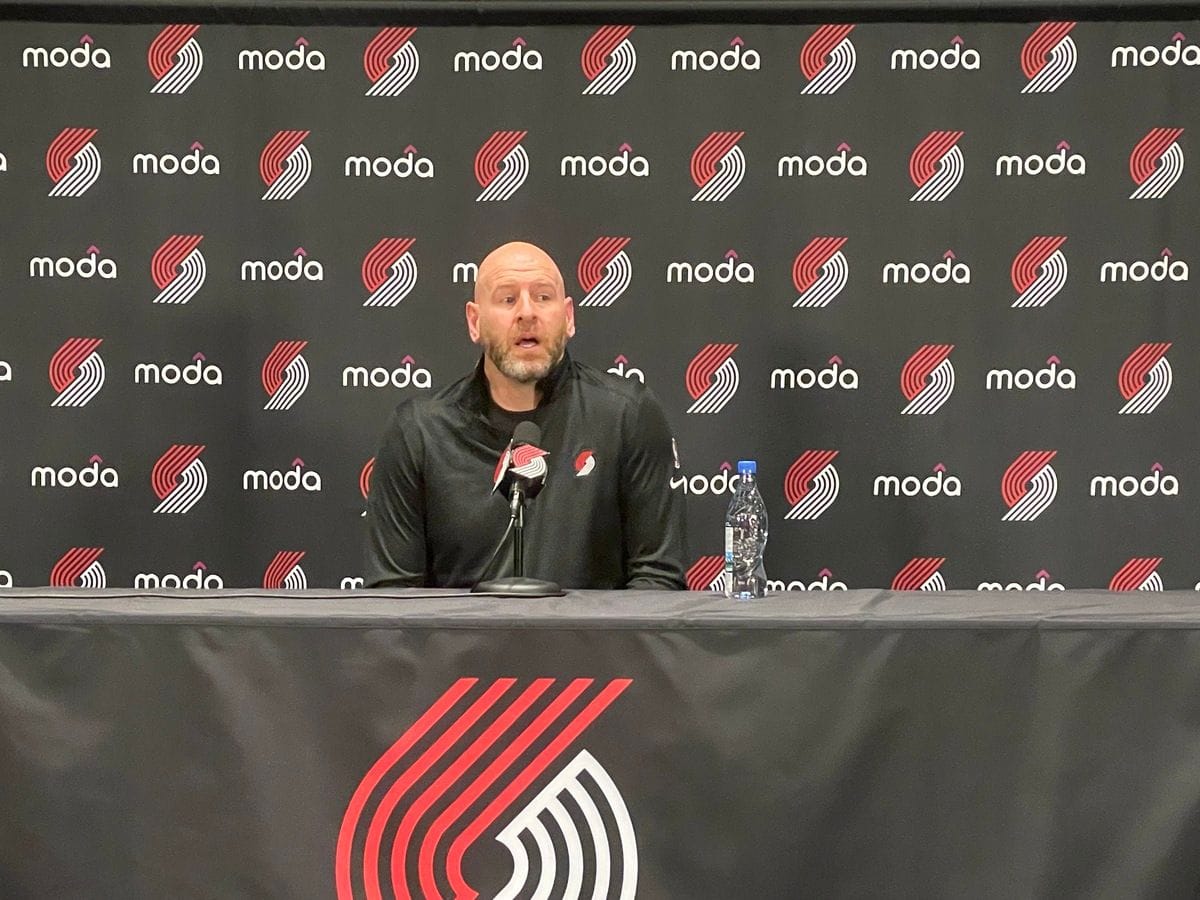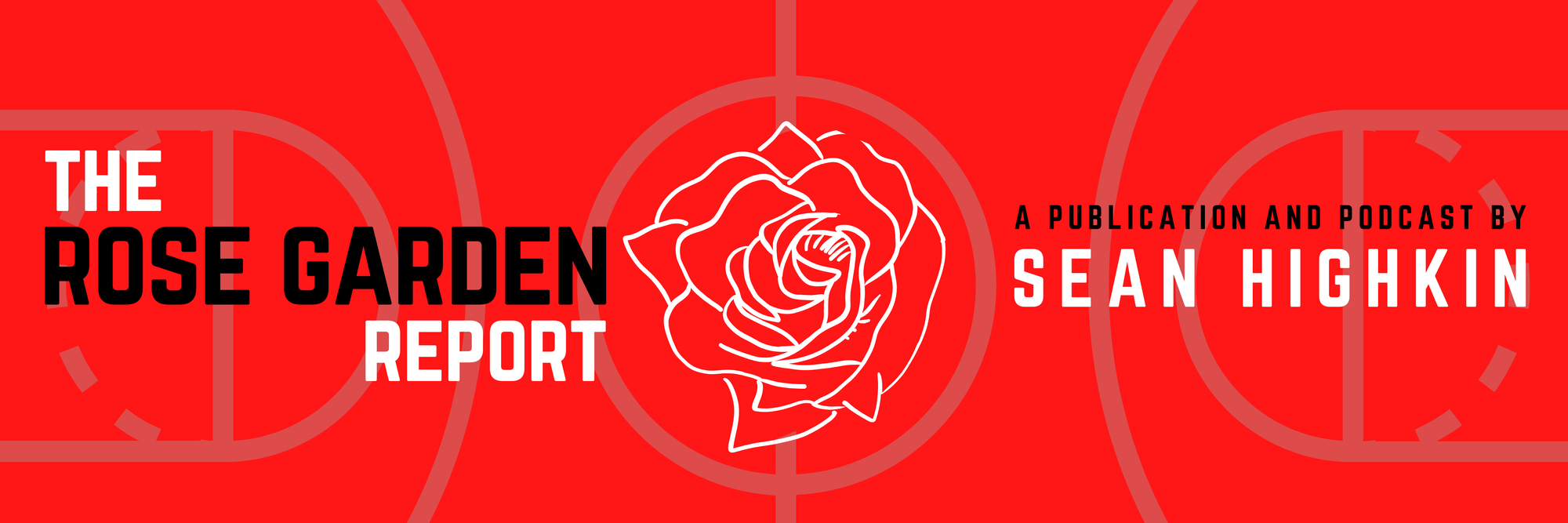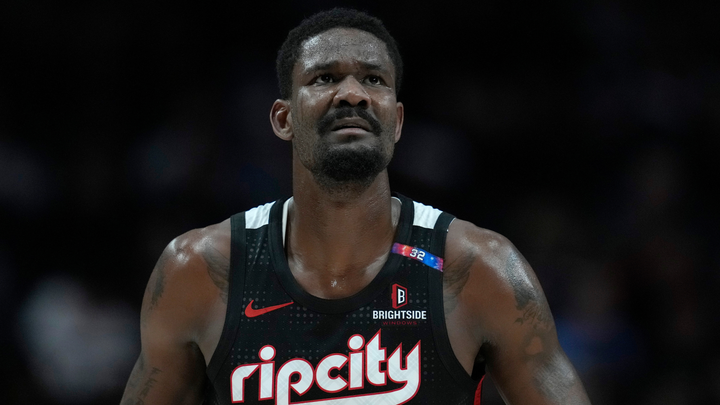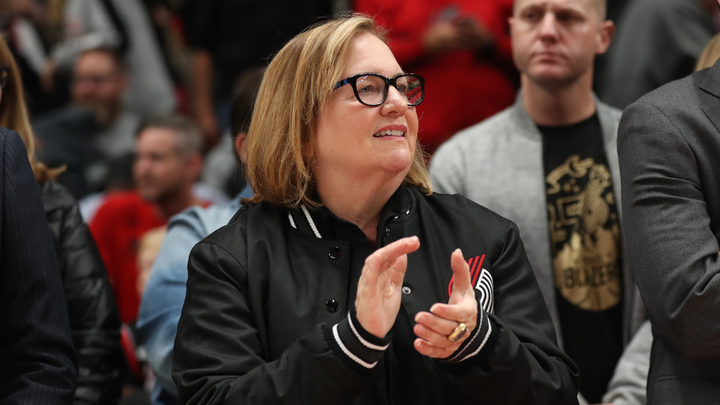Free Agency Preview: Joe Cronin's Biggest Test Yet
Thoughts on how the next two weeks might play out for the Blazers

The Trail Blazers got their first and maybe biggest move of the offseason out of the way before the draft with last Wednesday’s trade for Jerami Grant. But there will be more moves to make when free agency opens at 3pm locally on Thursday.
“We’re trying to be really aggressive," Joe Cronin said on draft night. "We know we’re not good enough. We want to keep trying to get better."
It's the same message he's hammered since taking over as general manager in December. He tore down the roster at the deadline, taking some swings on flexibility that didn't work out in the short term, but recovered nicely with the Grant trade.
Now comes his biggest test, and the most significant opportunity to put real talent around Damian Lillard.
The biggest trade chip Cronin has left is Eric Bledsoe, whose $19.3 million salary for next season is only $3.9 million guaranteed if he's waived by July 10. There's always the possibility Josh Hart or Nassir Little could be included in a trade, but the sense is they would need to return a significant upgrade to be in play.
As far as free agency, the Blazers won't have any salary-cap space. It was never likely they would—the "almost $60 million" number that was thrown around after the trade deadline was never realistic, even if they cut literally all non-guaranteed money from their books—but using a trade exception to acquire Grant made it official that they'll be operating as an over-the-cap team.
Cronin will go into free agency with the midlevel and biannual exceptions and a couple of his own key players to re-sign. Here's a look at how all of this might play out over the next couple of weeks.
What will Simons and Nurkic deals look like?
The Blazers have two major free agents of their own in Anfernee Simons and Jusuf Nurkic. I wouldn't expect there to be much drama with either of them.
Simons is a restricted free agent, so if he really wanted to, he could make them sweat by getting a huge offer sheet from a team with cap space like Detroit and forcing them to match. But the sense both from his side and the team is that they'll be able to get something done quickly and avoid all of that.
They've probably already loosely agreed on a number that reflects the jump he made last season. Something in the range of $75-80 million over four years is likely where they land, paying him high-end starter money but on a deal he could easily outperform as salaries continue to skyrocket around the league.
Simons is still only 23 without anything concerning in his injury history (the left knee patellar tendinopathy that sidelined him the final 19 games of last season can be filed under "assisting the tank" and not anything he couldn't have played through if they were trying to win), so there won't be any issues fully guaranteeing that money and setting him up for an even bigger payday going into his age-27 season if he continues on the track he's been on.
Nurkic's deal is a little less straightforward. The per-year money will probably land in the $16-18 million range, but it remains to be seen how many years they go and how much of it is guaranteed. He'll be 28 at the start of next season. Paying a center with his injury history into his 30s is risky, so if there's a fourth year on the deal, expect it to be some kind of team option or partial guarantee. There will also likely be some incentives for games played and other injury protections in the deal.
Nurkic was playing the best basketball he'd played post-2019 leg injury this season until he was shut down with plantar fasciitis towards the end of the year. He wanted to play through it (that’s an injury that comes down to individual pain tolerance, so if he felt like he could play, doing so wouldn’t have made things worse long-term). But like Simons, he was kept out to improve the team’s lottery odds. Once he wasn't traded at the deadline, it was fair to assume Cronin and his reps at Klutch Sports would start trying to figure out the framework of a deal that was fair to both sides. And when his camp allowed the team to shut him down for the season in a contract year, it was yet another signal that talks between the sides had already started informally and it was likely he'd be back. Barring something totally unexpected like a Deandre Ayton sign-and-trade, Nurkic's deal will get done quickly.
Big swings in restricted free agency
Speaking of Ayton, that should probably be addressed here. Since Portland doesn't have cap space, figuring out a sign-and-trade for someone like the Suns big man, who will command a salary starting around $30 million annually, will be difficult. Base-year compensation rules come into play, meaning a contract you take back in a sign-and-trade counts at a lower number for trade purposes (it's really complicated and arcane and I would recommend you go read Larry Coon's CBA FAQ if you're really curious how it works).
The same goes for Miles Bridges, the other impact restricted free agent who's seen as possible to leave his current team since he and the Hornets seem to not be on the same page in contract talks. Either Ayton or Bridges would be the biggest and most meaningful upgrade the Blazers could make this summer if they were to figure out a sign-and-trade, but I don't see it happening in either case.
What about the Blazers' other free agents?
Two of Portland's other free agents are worth keeping an eye on—Joe Ingles and Ben McLemore.Ingles is turning 35 and coming off a torn ACL; don't expect him to contribute much if at all in a Blazers uniform at any point. But also don't be surprised if he's re-signed. He came over in a trade with Utah at the deadline that was mostly about moving money around, but he had a great reputation as a locker-room presence in eight seasons with the Jazz. And it’s worth mentioning that espite being ruled out for the season by the time of the trade, he still reported to Portland and started being around the team towards the end of the season. If there was no thought at all of keeping him around, that wouldn’t have been worth the effort to do.
Re-signing Ingles to a one-year deal in the $10-15 million range (possibly including a team option or partial guarantee for a second year) would give the team another contract they can use at some point during the season to make upgrades. It's a real possibility.
McLemore will likely have interest from contending teams after playing a season in Portland on a minimum deal where he was a consistent scorer off the bench. But if he wants to stick around, they could do a lot worse for backcourt depth.
Midlevel exception candidates
Depending on what they do with Bledsoe's contract and how much money they take back, the Blazers should have access to the full (non-taxpayer) midlevel exception, which will be worth about $10 million. This should be enough for them to add a quality depth piece.
We've seen by now the type of player Cronin and Chauncey Billups have prioritized, and you can expect them to add another wing who can defend or a backup center with that money.
On the wing side, Kyle Anderson would make a lot of sense as a target. Memphis would like to keep him, but they're facing a roster crunch and starting to get to the point where they have to pay their core players. It's a good problem to have when you've drafted as well as that front office has. TJ Warren might be someone they look at here as well.
As far as backup centers, Mo Bamba is probably the best player available in that price range. Mitchell Robinson could be an option if he leaves the Knicks, but it's seeming like he's staying there. Former Oregon Duck Chris Boucher would make some sense too.
Portland also has the biannual exception (a little over $4 million) to play with. These days, a lot of teams keep that open to use in the buyout market after the trade deadline. If everything goes according to plan and the Blazers are in the playoff mix, they could go after someone who shakes free there.
Trade exception candidates
The Blazers used their biggest trade exception, worth about $21 million from the CJ McCollum trade, on Grant. They still have two smaller exceptions they can use—one from the Norman Powell/Robert Covington trade that's worth about $6.5 million, and one from the trade with Utah that got them Ingles, that's worth about $3.2 million.
This is where you keep an eye on good rotation players still on their rookie contracts that their current teams may not want to pay when they're up for extensions and may be had using future second-round picks or just pure salary relief. Philadelphia's Matisse Thybulle, Phoenix's Cam Johnson and Charlotte's PJ Washington could all be possibilities here.




Comments ()